
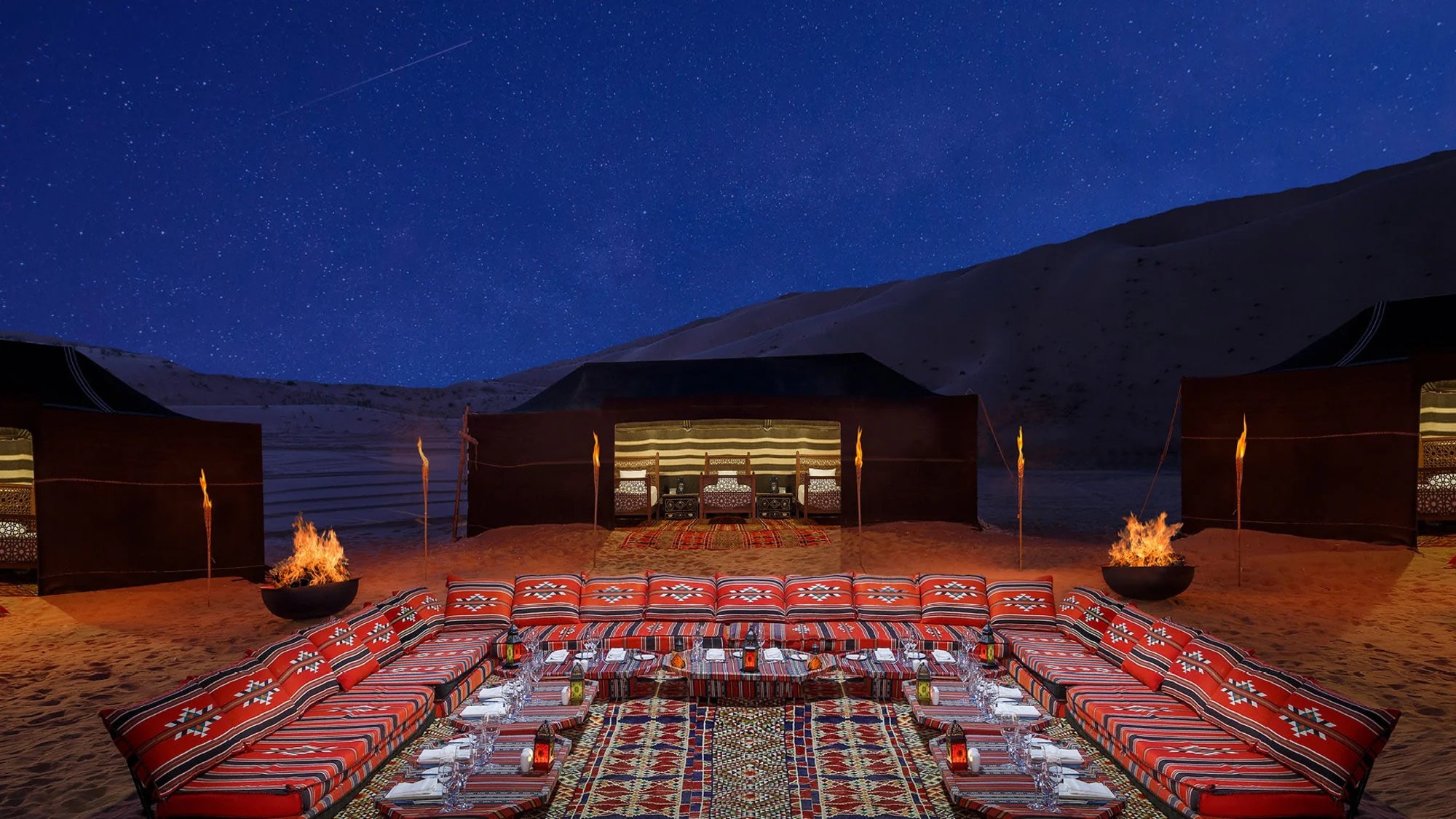
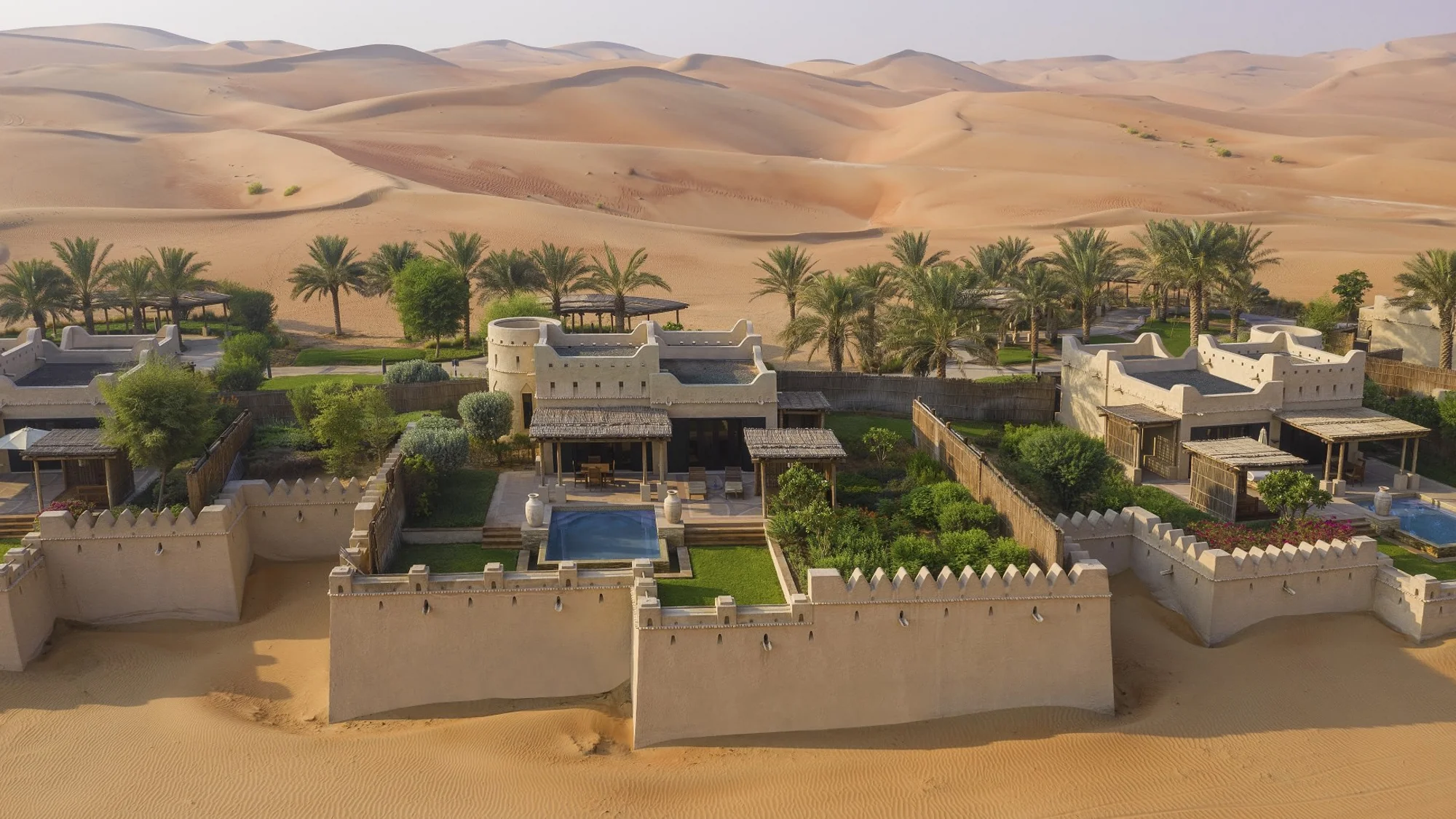
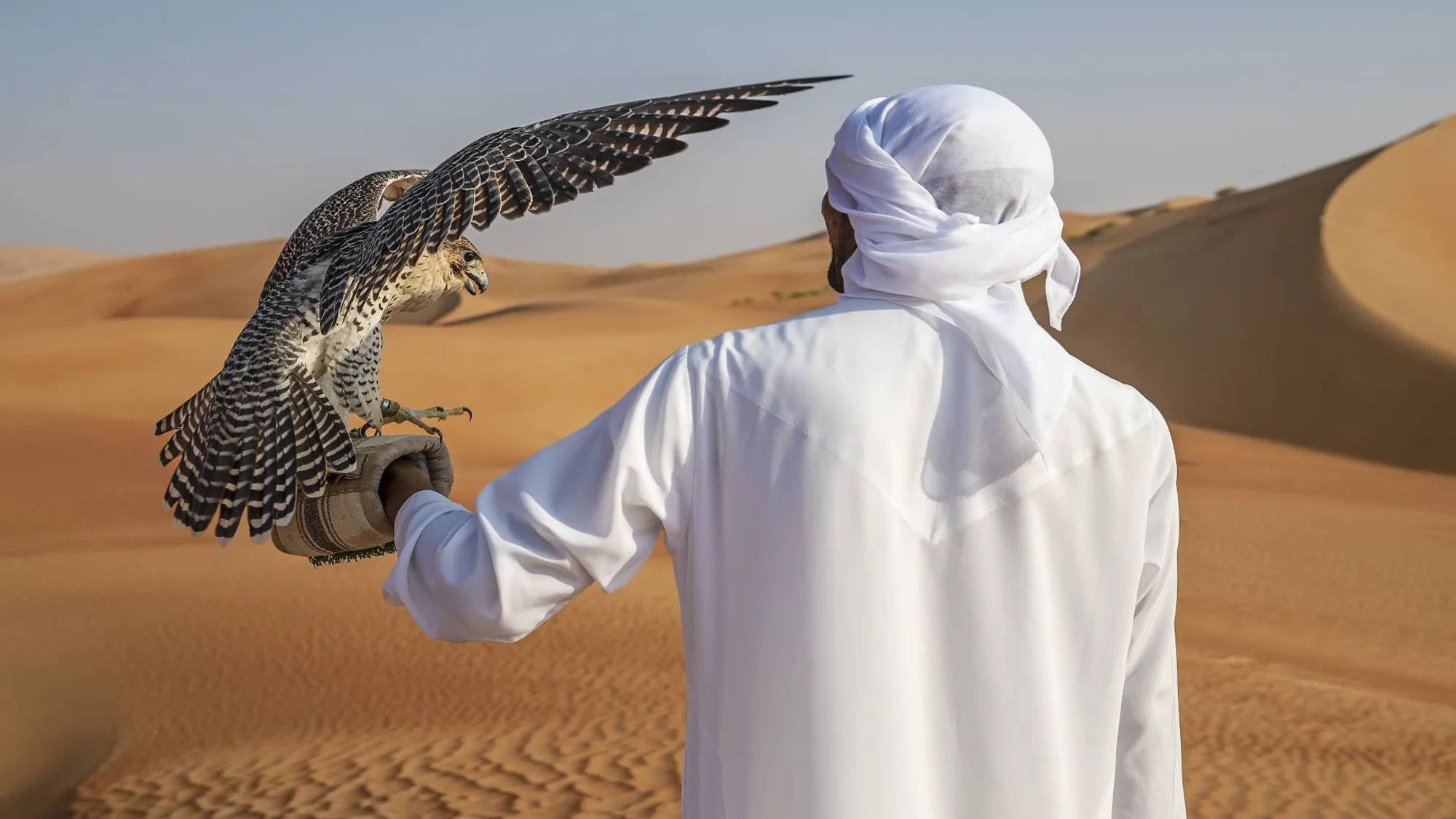


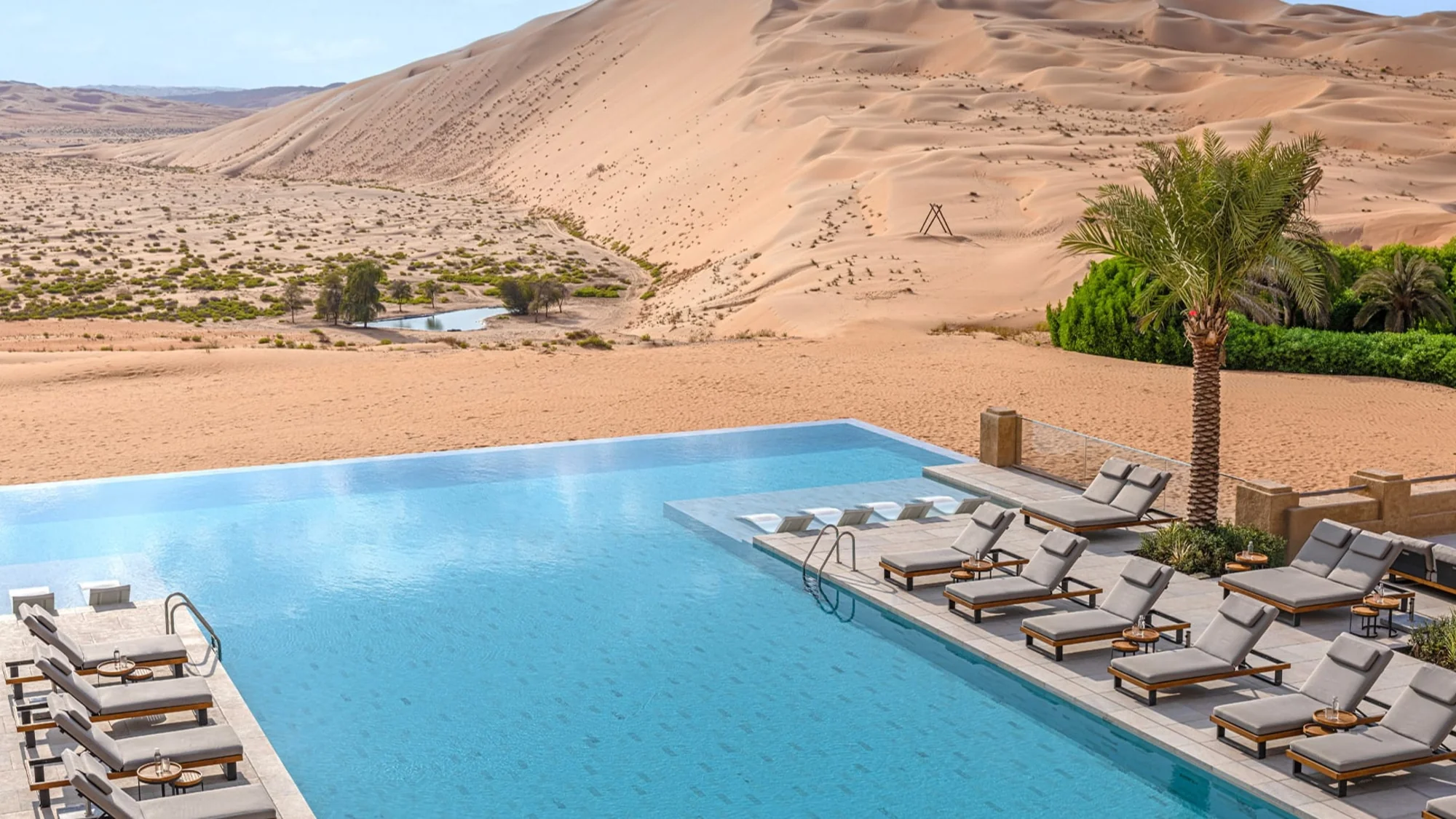

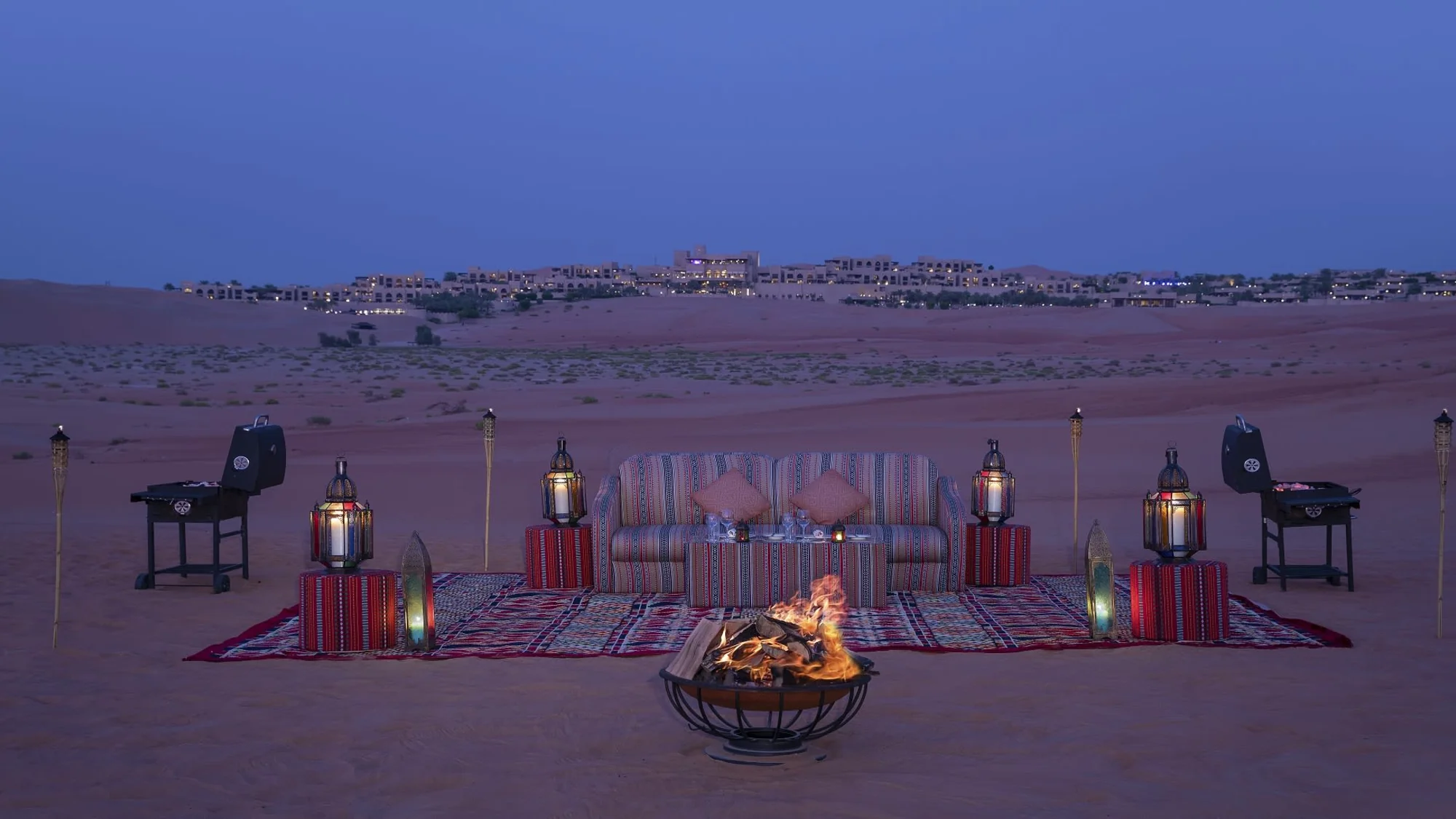

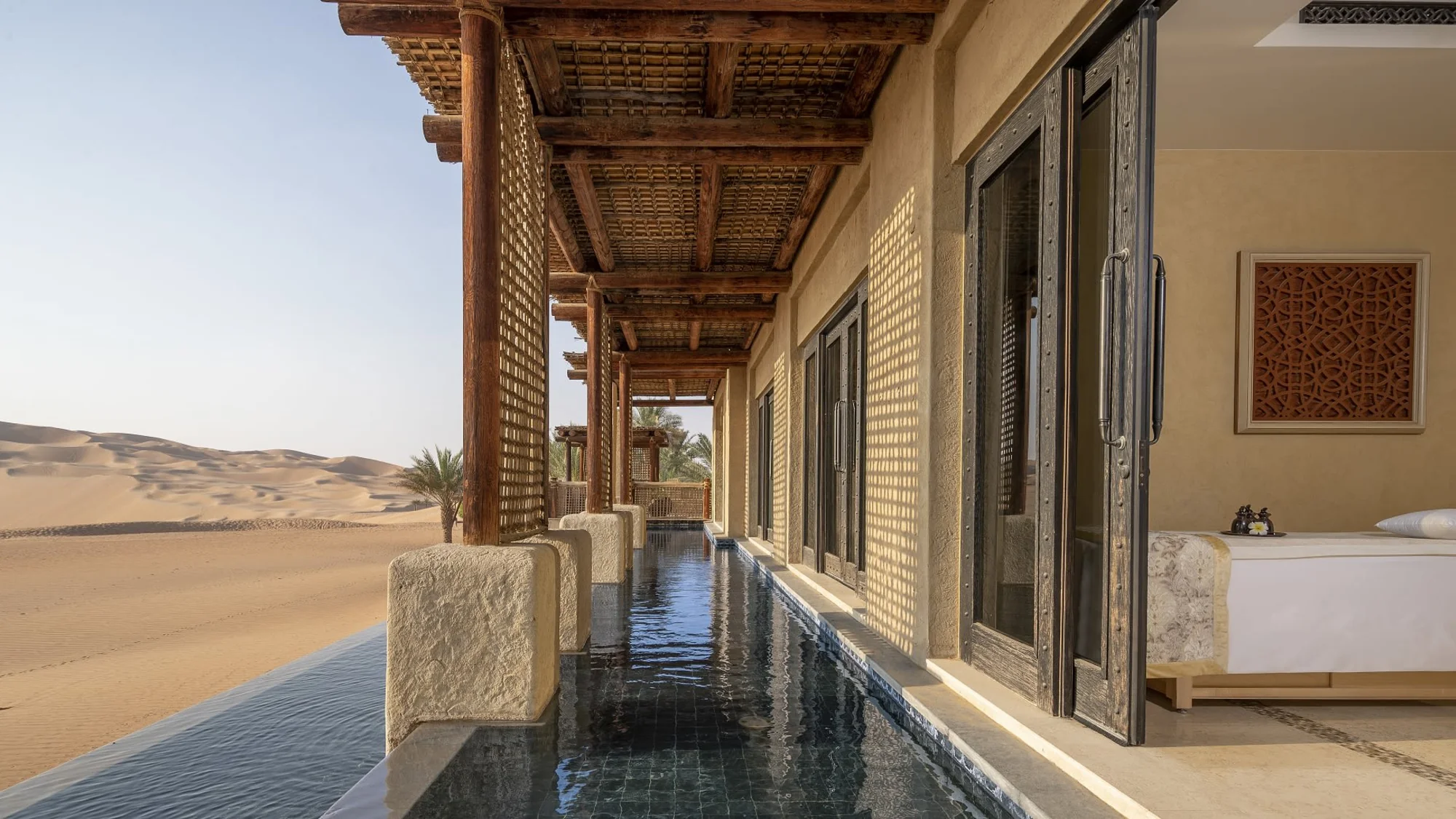
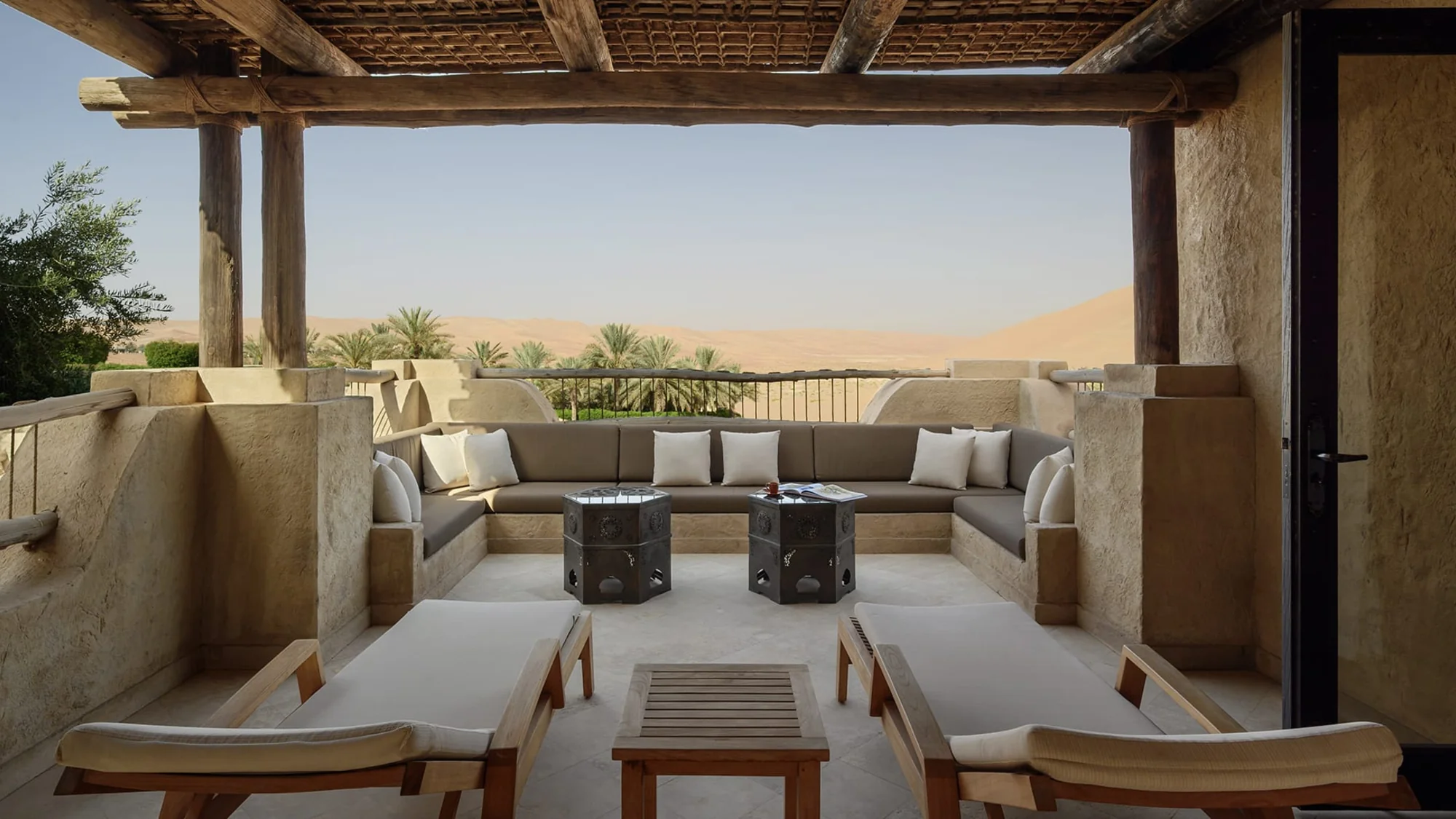


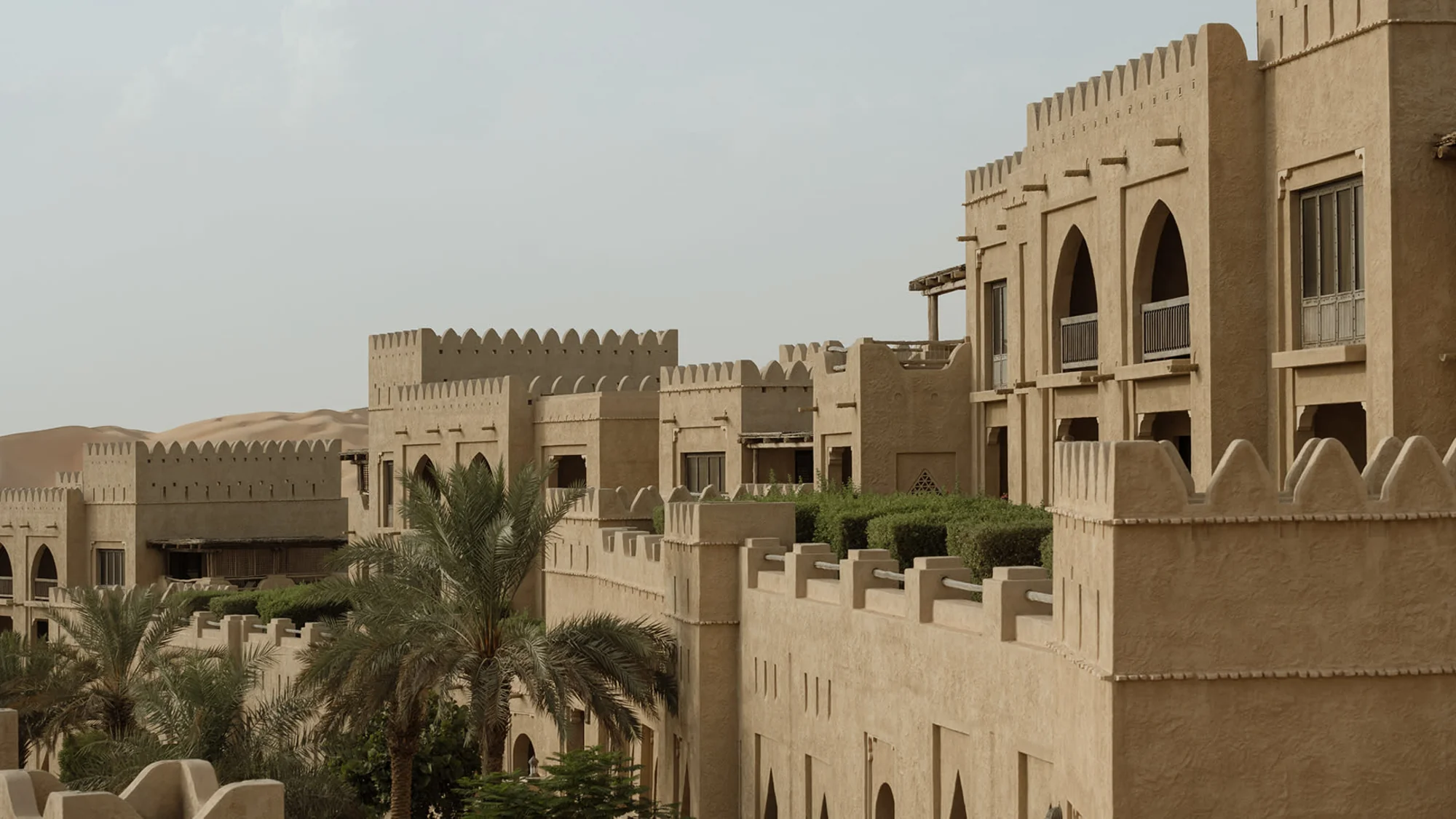
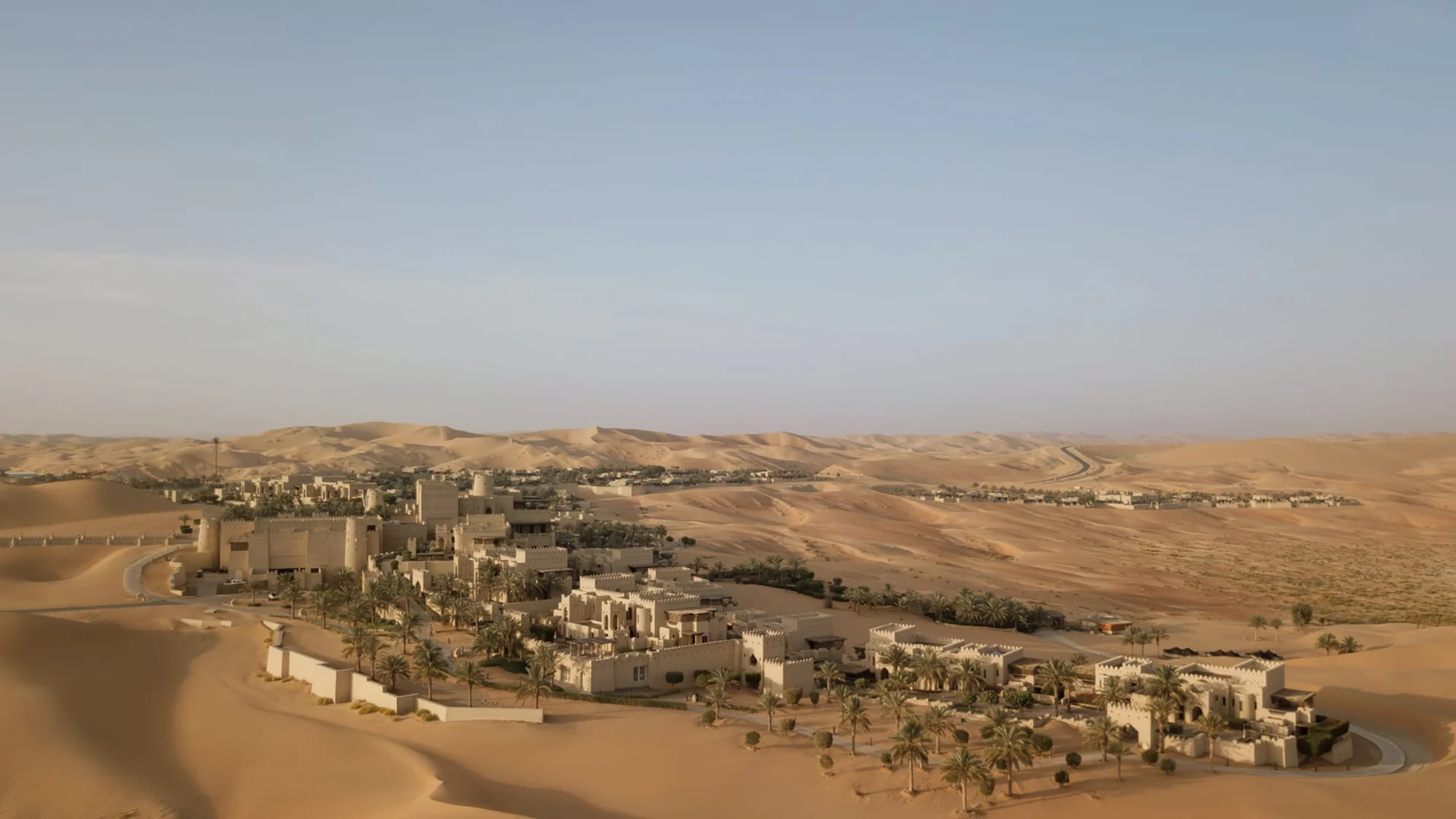
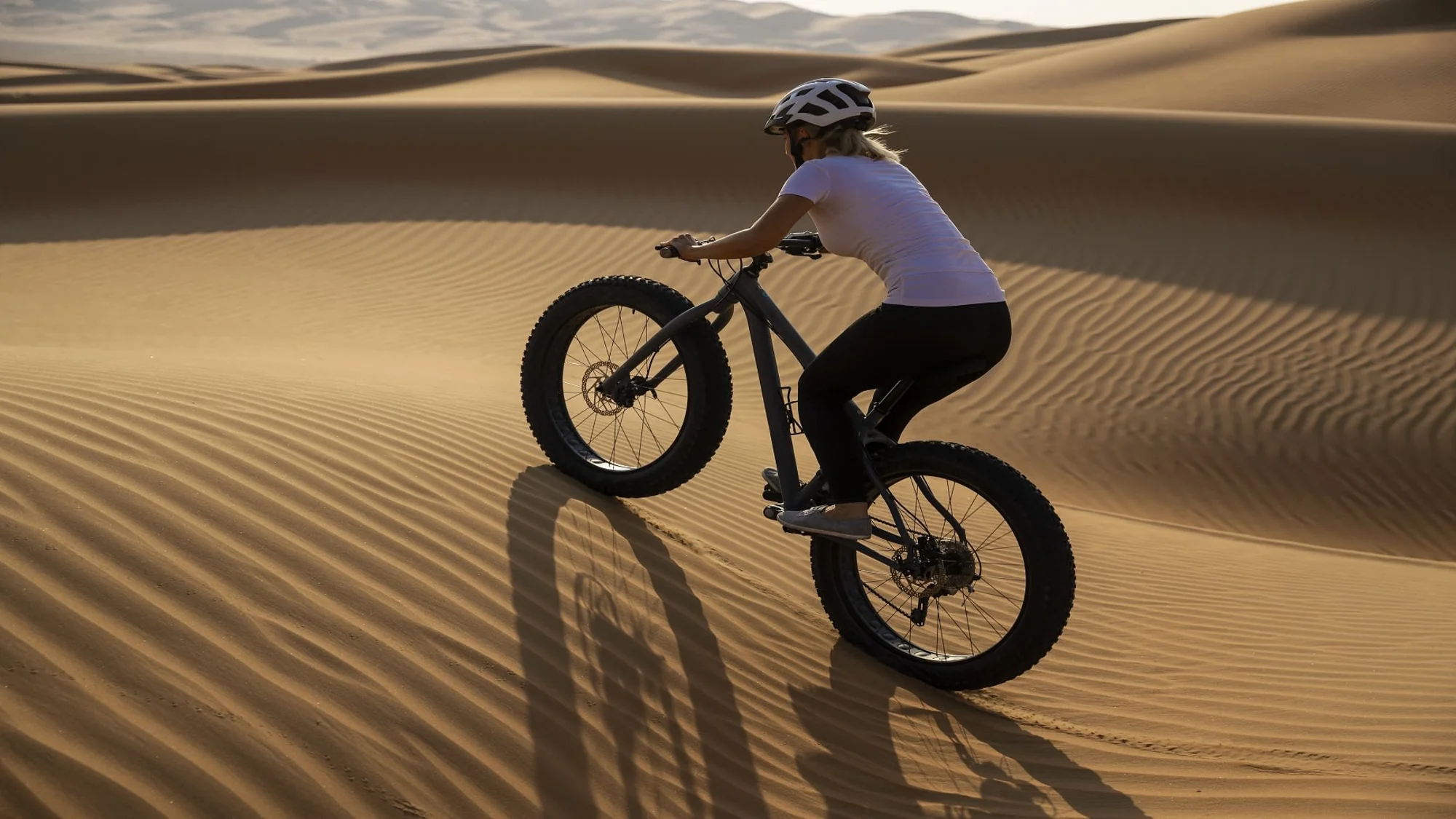
The Quarter That Has Nothing to Give You: Rub' al Khali's Hostile Generosity
When Emptiness Is the Only Gift
by KA's Experience Team

October through April
Best months to visit
June through December
Best time to book
October through April
Best months to visit
June through December
Best time to book
It's a great time to book this destination!
Experience the Empty Quarter—Earth's largest sand desert. No water, no life, no metaphor that flatters humans. Discover the psychology of landscapes that offer nothing—no transformation promise, no spiritual awakening, just brutal, honest emptiness.
We Handle Everything. You Just Show Up.
No research. No coordination. No backup plans needed. Just your perfect journey—guaranteed.
Create Your JourneyThere’s a specific moment—it happens to everyone who comes here—when you stop trying to find meaning in the dunes and just watch them.
It’s not peace. Not at first.
At first, it’s louder inside your head than it’s ever been.
When Nothing Looks Back
The Rub’ al Khali is the largest contiguous sand desert in the world1. 650,000 square kilometers of sand that refuses to be anything other than what it is. No metaphor. No mirror. No spiritual awakening waiting in the wings.
Most landscapes let you project onto them. A mountain is “your climb.” A forest is “your journey inward.” The ocean is “your vast potential.”
The Empty Quarter doesn’t accept your projections.
The dunes here—some reaching 300 meters high, sculpted into impossible geometries called “star dunes” with three or more arms shaped by conflicting winds2—operate on a geological timescale that makes human presence statistically irrelevant. The heat, which regularly exceeds 50°C3, is not a challenge to overcome. It’s a primary fact that reorganizes your entire nervous system around a single imperative: adapt.

Looking up at what refuses to be comprehended. Scale that crushes the ego before you even begin.
You cannot negotiate with this place. You cannot optimize it. You cannot make it mean something it doesn’t.
And that’s exactly why you’re here.
The Death of Agency
If you’re reading this, you’re probably very good at imposing structure on chaos. You make things happen. You send an email, and the world responds. You implement a strategy, and systems change. Your sense of self is built on a feedback loop of agency and response4.
The Empty Quarter is a masterclass in intractable constraints.
There’s a reason this works for founders, leaders, people whose identities have fused with their projects so completely that disconnection feels like a threat to the self4. This isn’t a digital detox. Those remove the tool—the phone, the laptop, the connection.
This removes the system that validates your operating system.

The moment you stop trying to control and let the sand swallow your grip.
For the first time in years, possibly decades, you will experience what it feels like when the external world provides exactly zero response to your intent. No emails to answer. No problems to solve. No one to lead. No notifications. No validation.
Just 50-degree heat. Silence so total you can hear your own pulse. And dunes that will look exactly the same whether you exist or not.
The Silence You Can Touch
The audio ecologist Gordon Hempton spent his life documenting quiet and its disappearance. He noted that even in protected wilderness areas, it’s nearly impossible to experience a noise-free interval of just 15 minutes5.
The Empty Quarter offers days of this.
But here’s what the research on silence reveals: quiet is not merely the absence of noise5. It’s an affirmative presence. It’s a different state of consciousness, as essential to life as sleep is to wakefulness5.
When the external noise stops—when there’s literally nothing to hear but wind and your own breath—something strange happens. Your brain, starved of its usual chaotic, high-frequency input, loses its primary orientation data. The constant internal chatter—the planning, the worrying, the rehearsing, the narrative-making—becomes hyper-audible6.

Hearing nothing isn't emptiness. It's a presence so complete it demands your full attention.
For leaders and founders, this is often the first time you’ve been able to observe your own operating system as a separate object, not as the lens through which you experience reality.
One person who made this journey said: “I realized how much of my ‘self’ is just a collection of responses to other people’s needs.”
Another: “My sense of time completely dissolved. I started thinking in terms of ‘heat’ and ‘cool.’”
These aren’t poetic exaggerations. They’re clinical descriptions of what happens when the brain’s Default Mode Network—the neurological seat of self-narrative, planning, and social modeling7—is systematically starved of the external data it needs to sustain its loops.
Your Mind Without You
There’s a specific network in your brain called the Default Mode Network (DMN). It’s active when you’re not focused on external tasks but engaged in internal processes6. It’s where your self-referential thought lives. Your autobiographical memory. Your planning. Your simulations of future scenarios7.
If you’re a founder or a leader, your DMN is probably hyperactive. It has to be. Your success depends on it. Constant planning. Constant simulation. Constant narrative construction—for your company, your team, your investors, yourself4.
But here’s what neuroscience reveals: hyperactivity and rigid connectivity within the DMN are also associated with dysfunction—depression, anxiety, and a high reactivity to emotional stimuli89. You’re trapped inside your own operating system, and it’s overworked, over-fed, and incapable of true rest.
The Empty Quarter is a structural solution to this problem.
Research shows that focusing attention on silence can be used as a paradigm similar to sensory deprivation to study “consciousness without content”10. When the DMN has no external data to process, when the environment provides no metaphors to interpret, when there’s literally nothing to plan or simulate or narrativize, something profound happens.
The system quiets11.

Your operating system, breaking apart in real time. The self you thought was solid, revealed as temporary.
Not because you’ve learned to meditate. Not because you’ve developed some new skill. But because the environment has physically removed the content that the DMN is built to process.
What’s left is consciousness-as-such. A state researchers call “Nondual Awareness”—a background awareness that precedes conceptualization, free of the subject-object fragmentation that defines your normal waking life1213.
One account of this state describes it as one where “no symbols are encountered… all awareness of the self as body or special entity leaves… characterized by peace, silence”14.
This is the first glimpse of the “you” that exists beneath the layers of identity, technology, and narrative.
Those Who Read Wind
The Bedouin—specifically the Al Murrah tribe—have lived in the Rub’ al Khali for generations15. They’re not visitors. They’re not here for transformation or insight. They’re here because this is home.
Their relationship with this landscape is the thing you’re trying to learn.
They don’t impose will on the desert. They read it. They navigate by wind patterns and the subtle shifts in sand texture16. They possess what researchers call “traditional ecological knowledge”17—a form of deep, embodied understanding that Western psychology is only beginning to map.
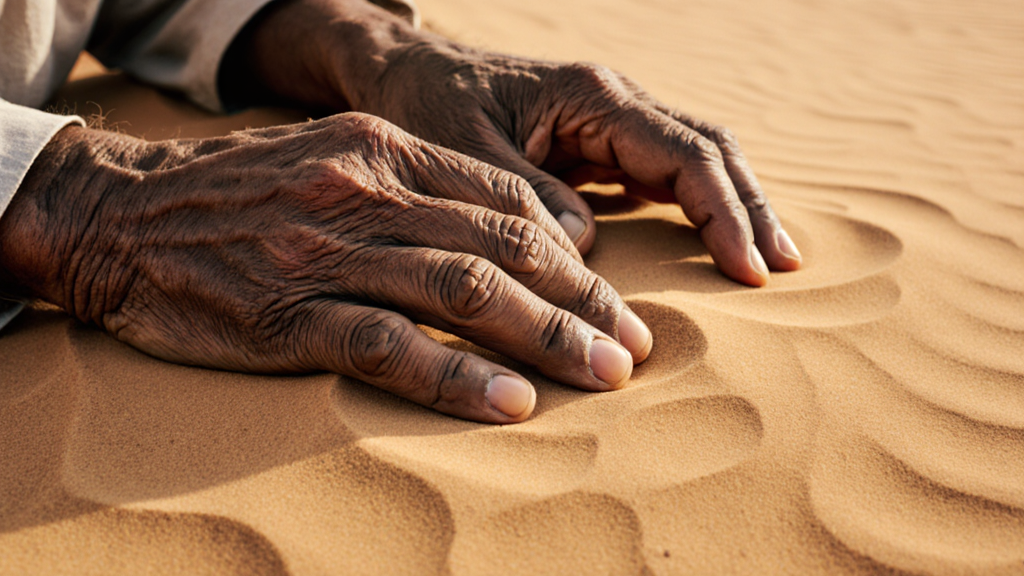
Knowledge that lives in fingertips, not textbooks. Reading the desert like Braille.
What you call “meditation” or “presence,” they call “Tuesday.”
Their cognitive state is what happens when the metaphor engine doesn’t run. When you don’t project meaning onto the landscape, but simply observe what’s there. When your identity isn’t fused with achievement or productivity or social role, but with adaptation and attention.
They’re the living proof that a different operating system is not only possible, but durable.
And they’re your guides. Not in a tourism sense. In a transmission sense.
Wilfred Thesiger, the British explorer who crossed the Empty Quarter with Bedouin guides in the 1940s, wrote Arabian Sands18—a book that’s not really a travelogue but something quieter. An account of “a way of life now gone”19.
Thesiger was a man of the 20th century actively rejecting its “complications” and “overheated nervous systems”20. He was, consciously or not, seeking what you’re seeking: a sterility of complications. A zero point. A place where the DMN could idle and he could observe what was left.
He found it. And he found the people who had mastered it.
The Gap Between
This isn’t a retreat. It’s not a reset. You don’t come back as a “new you.”
You come back with two things:
An embodied memory. You now have the physical, lived experience of a quieted DMN. You’ve felt a self that is not your reactive, narrative-driven operating system. You know, in your body, that the voice in your head—the constant planning, the simulation, the narrative—is not synonymous with “you.”
Metacognition. Because of this experience, you can now observe your DMN’s hyperactivity and reactivity from an objective distance, without identifying with it. When you’re back in the noise—the emails, the notifications, the demands—you have a new relationship with that noise. It’s still there. But you’re no longer fused with it.
People who’ve made this journey report a “recalibrated zero point.” When everything gets loud again, they have a reference point for what silence feels like. When the demands pile up, they have a reference point for what it feels like to exist without being needed.
One person said: “I still work the same hours. I still carry the same responsibility. But I’m not carrying it the same way. There’s a gap now between the stimulus and my response. I didn’t even know that gap was possible.”
This is what you’re here for. Not peace. Not transformation. But a gap.

The space around you becomes the thing itself. The gap between stimulus and response, made visible.
A space between who you are and what you do.
A glimpse of the self that exists before the story.
Small, At Last
There’s one more thing that happens here, and it’s strange.
In the face of the incomprehensible vastness—the dunes that stretch beyond what your brain can process, the night sky that reveals more stars than you knew existed21—something shifts.
Your sense of self shrinks. Not in a bad way. In the way a clenched fist opens.
Research on awe shows that it creates a “diminished sense of self” (an effect known as “the small self”) and increased feelings of connectedness22. When your brain confronts something it cannot categorize or control, when the scale is so large that your narrative-making engine fails, empathy doesn’t die.
It expands21.
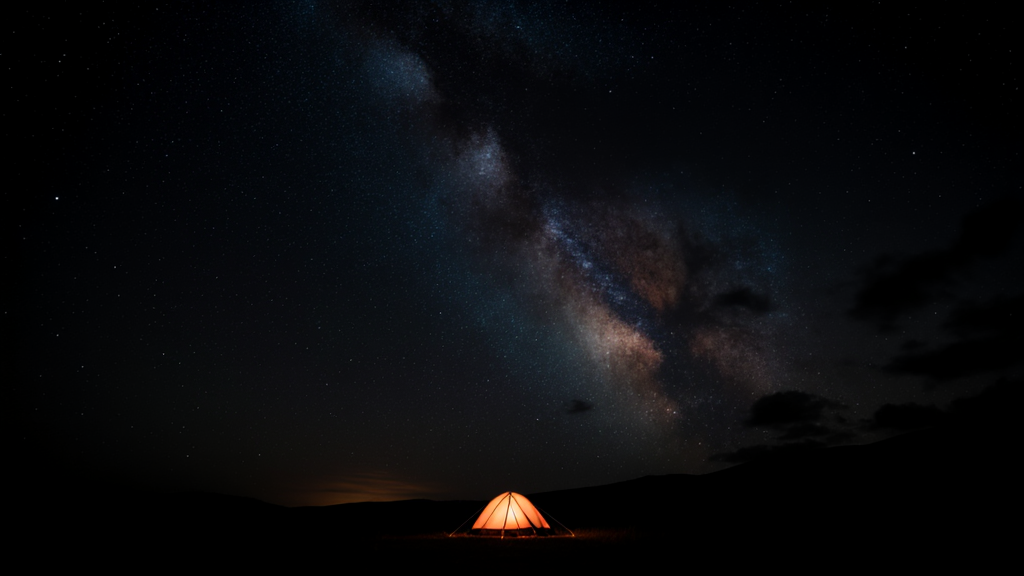
One pinpoint of warm light against infinite darkness. You are impossibly small. This is the gift.
It becomes something else. Not empathy for a person or a project. But a sense of connection to something incomprehensibly larger. The desert. The sky. The 10,000-year story written in hardened lake beds and star dunes3.
This is the unwanted gift of the Empty Quarter. You came for silence. For a break from yourself. For a recalibrated zero point.
What you get is all of that. Plus awe. Plus the small self. Plus the uncomfortable, beautiful realization that you are not the center of anything—and that this fact is a relief, not a loss.
How Emptiness Works
You don’t camp in the tourist sense. You’re supported by guides who understand this environment at a cellular level—Bedouin practitioners whose families have navigated this desert for generations.
The infrastructure is invisible but absolute. Safety. Water. Shelter that allows you to experience the environment without fighting for survival. You’re not Bear Grylls. You’re not proving anything.

Care made tactile. Warmth you can hold. Hospitality as an act of transmission.
You’re creating the conditions for a specific neurological event: the quieting of your Default Mode Network.
The itinerary is designed around this singular goal:
- Arrival and sensory subtraction. You enter the desert as the external stimuli begin to drop away.
- The first night. When the hyperactivity becomes hyper-audible and you confront the noise of your own mind.
- The long silence. Days of walking, sitting, observing. No agenda. No achievement. Just the dunes and the heat and the gap that begins to open.
- The night sky. When the scale tips from silence to awe and the small self emerges.
- The return. Not to “normal life” but to life with a new reference point.
This is not packaged as a product. It’s offered as a passage. The means to attain something you didn’t know was missing: the experience of yourself without the story.
For Those Who Can’t Stop
This is for people whose identity is their work. Founders who can’t separate the self from the company4. Leaders whose nervous systems are wired to constant connectivity and who feel guilt when they try to disconnect23.
This is for people who are very good at imposing will on the world and who are starting to suspect that this skill, while essential, has also become a prison.

Not defeat. Surrender. The moment the empire-builder stops building and just... sits.
This is not for people looking for luxury travel with a side of transformation marketing. This is not “find yourself” content. The Empty Quarter doesn’t care about your journey. It won’t applaud your breakthroughs. It won’t give you a story to tell at dinner parties.
What it will give you is this: a reference point for silence. An embodied memory of what consciousness feels like when it’s not filled with narrative. A recalibrated zero point.
And the uncomfortable, durable gift of realizing that the “you” who runs the company, leads the team, carries the responsibility—that’s not the whole story.
There’s a you beneath that. And it’s been waiting.
The Gift of Nothing
The desert offers nothing. No transformation. No epiphany. No metaphor that flatters your struggle.
What it offers is itself: 650,000 square kilometers of sand and silence and heat that doesn’t care if you’re there1.

The line where everything becomes nothing. Where nothing becomes everything. Complete.
And somehow, that’s everything.
We Handle Everything. You Just Show Up.
No research. No coordination. No backup plans needed. Just your perfect journey—guaranteed.
Create Your Journey-
Arabian Desert: Facts, Geography and Climate | See Wadi Rum Source ↩
-
(PDF) Leadership Observatory Report 2020: Paradoxical Management Challenges Source ↩ ↩2 ↩3 ↩4
-
The Journey of the Default Mode Network: Development, Function Source ↩ ↩2
-
Changes in default-mode network activity and functional connectivity Source ↩
-
Hacking Consciousness: Mindfulness Meditation, Ego Death, and Enlightenment Engineering Source ↩
-
Reflections on Inner and Outer Silence and Consciousness Without Contents Source ↩
-
(PDF) Neural correlates of nondual awareness in meditation Source ↩
-
Beyond the veil of duality—topographic reorganization model of meditation Source ↩
-
(PDF) Nondual Awareness and Minimal Phenomenal Experience Source ↩
-
Exploring Nondual Awareness: Understanding the Harvard DASH Source ↩
-
Changing Nomads in a Changing World | The Ted K Archive Source ↩
-
Southern Arabia’s Early Pastoral Population History: Some Recent Evidence Source ↩
-
What Are You Reading This Week and Weekly Rec Thread : r/TrueLit Source ↩
-
2019 – First Unitarian Universalist Church of Austin Source ↩ ↩2
-
Strategies of Remote Work within Diverse Teams - Lund University Publications Source ↩
